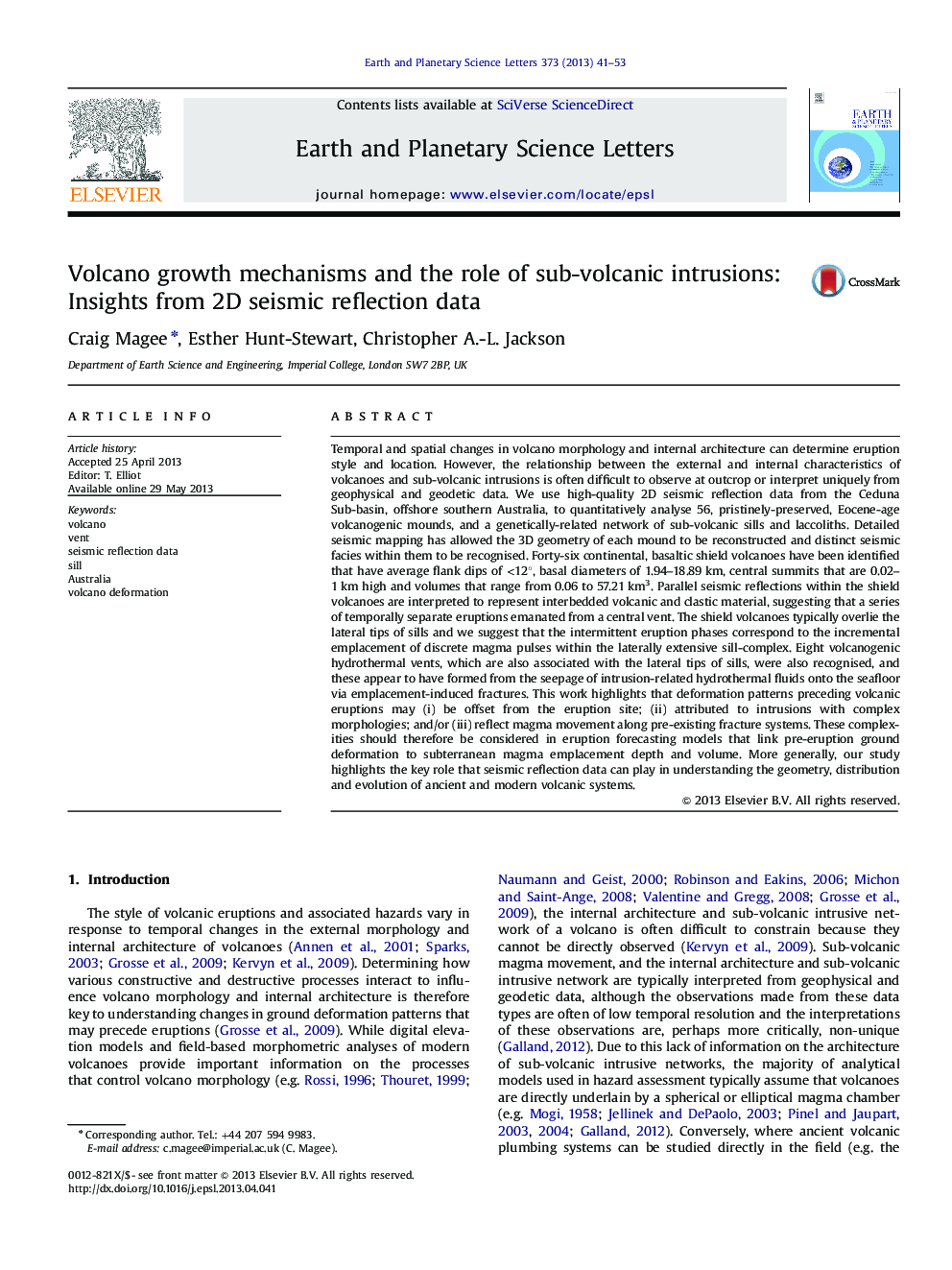| کد مقاله | کد نشریه | سال انتشار | مقاله انگلیسی | نسخه تمام متن |
|---|---|---|---|---|
| 4677063 | 1634782 | 2013 | 13 صفحه PDF | دانلود رایگان |

• Buried, Eocene volcanoes in the Bight Basin studied using seismic reflection data.
• Forty-six continental basaltic shield volcanoes and 10 hydrothermal vents identified.
• Morphometric parameters and internal architecture compared to discern growth modes.
• Volcanoes fed by a coeval sill-complex or by dykes intruding faults.
• Intermittent eruptions linked to emplacement of incremental magma pulses.
Temporal and spatial changes in volcano morphology and internal architecture can determine eruption style and location. However, the relationship between the external and internal characteristics of volcanoes and sub-volcanic intrusions is often difficult to observe at outcrop or interpret uniquely from geophysical and geodetic data. We use high-quality 2D seismic reflection data from the Ceduna Sub-basin, offshore southern Australia, to quantitatively analyse 56, pristinely-preserved, Eocene-age volcanogenic mounds, and a genetically-related network of sub-volcanic sills and laccoliths. Detailed seismic mapping has allowed the 3D geometry of each mound to be reconstructed and distinct seismic facies within them to be recognised. Forty-six continental, basaltic shield volcanoes have been identified that have average flank dips of <12°, basal diameters of 1.94–18.89 km, central summits that are 0.02–1 km high and volumes that range from 0.06 to 57.21 km3. Parallel seismic reflections within the shield volcanoes are interpreted to represent interbedded volcanic and clastic material, suggesting that a series of temporally separate eruptions emanated from a central vent. The shield volcanoes typically overlie the lateral tips of sills and we suggest that the intermittent eruption phases correspond to the incremental emplacement of discrete magma pulses within the laterally extensive sill-complex. Eight volcanogenic hydrothermal vents, which are also associated with the lateral tips of sills, were also recognised, and these appear to have formed from the seepage of intrusion-related hydrothermal fluids onto the seafloor via emplacement-induced fractures. This work highlights that deformation patterns preceding volcanic eruptions may (i) be offset from the eruption site; (ii) attributed to intrusions with complex morphologies; and/or (iii) reflect magma movement along pre-existing fracture systems. These complexities should therefore be considered in eruption forecasting models that link pre-eruption ground deformation to subterranean magma emplacement depth and volume. More generally, our study highlights the key role that seismic reflection data can play in understanding the geometry, distribution and evolution of ancient and modern volcanic systems.
Journal: Earth and Planetary Science Letters - Volume 373, 1 July 2013, Pages 41–53